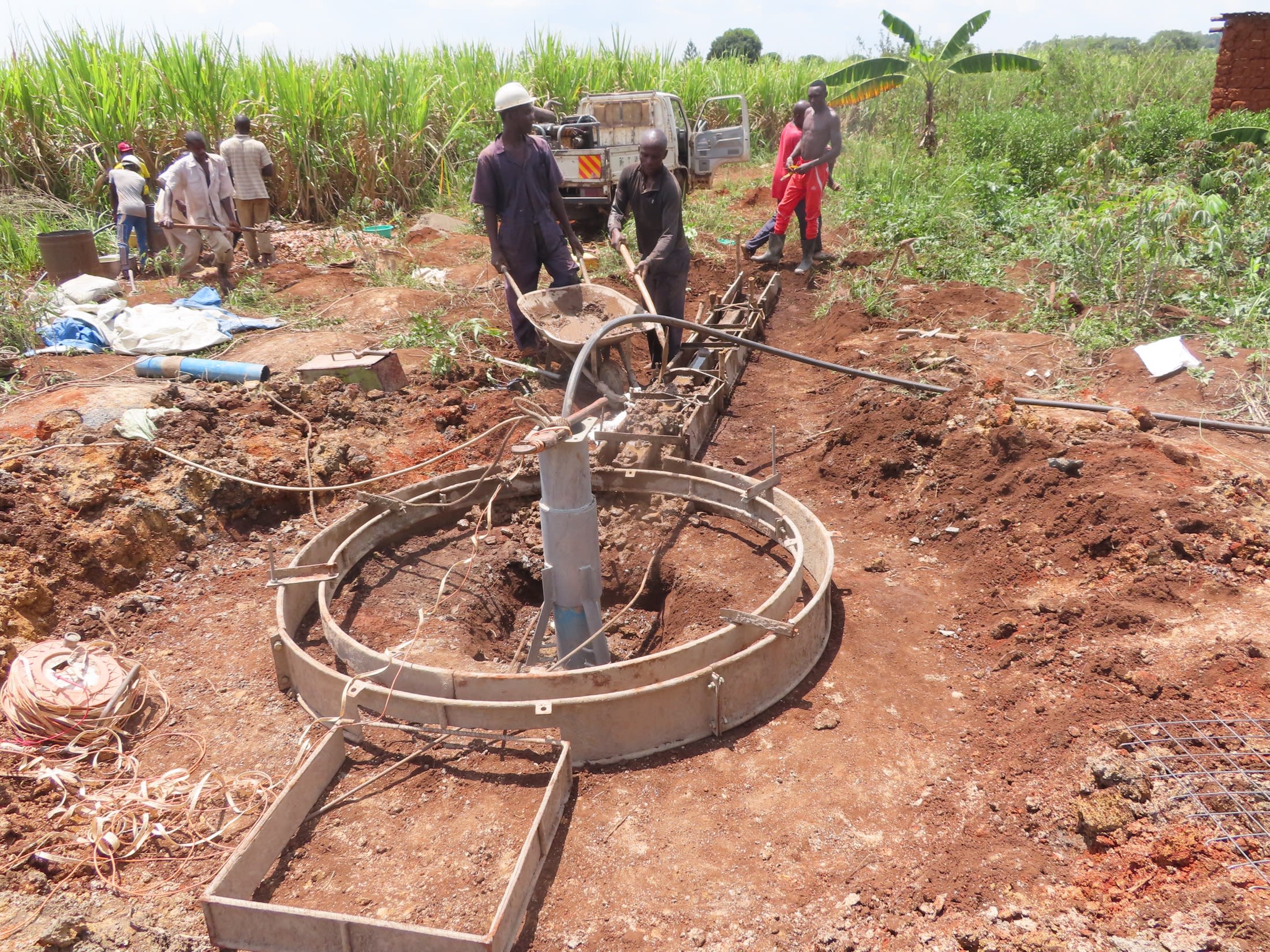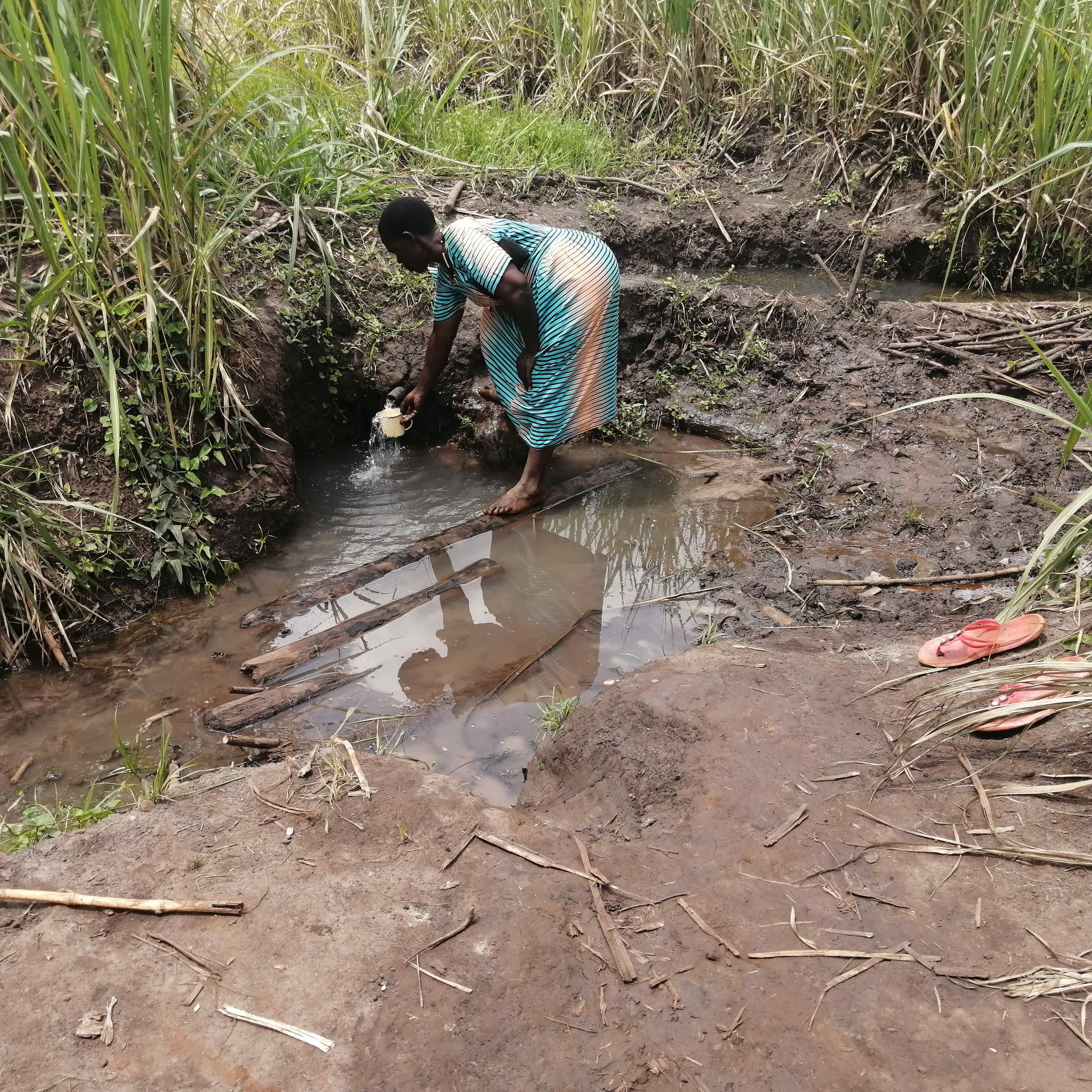Murro Kinyamutamba is near Kinyara Sugarcane Factory, where most community members work doing casual labor or sell their crops of sugarcane. Other local produce grown in this region is maize, beans, cassava, various vegetables, and groundnuts (peanuts).

This community relies on the water they can collect from open sources like scoop holes at the local swamp or a pipe haphazardly coming out of the dirt and clay of a nearby pool of water to meet their daily needs. Both animals and humans contaminate the water, and community members' health is at risk. Monkeys, snakes, and other animals wander throughout the swamp, and children swim and bathe near the watering holes.
Enok Mwesigwa, a local community member, shared how he and other men of the community participate in the water collection process. "To access water in this village is very stressing. The men normally wake up by 5:00 am in the morning to collect water. At this time the water has settled and [is] not overcrowded."
The alternative water choices for the community are roof catchments (only during the rainy season) or traveling a long distance to neighboring villages to use their existing wells.

Mariam Nakimula, a local housewife, shared how the current water situation affects her: "Each time I go to collect water, I find the children have already played in it, and it's very dirty. This really annoys me since I have to take some time and wait for the water to settle before I can go ahead to scoop clean water. Besides, it's also very risky to send our children to collect water since we feel they can easily drown."
This community needs a safe, clean, accessible water source to meet their needs and allow them to focus their time and energy on making progress in their daily lives.
Here’s what we’re going to do about it:
New Borehole
This new borehole is an exciting opportunity for this community! We work with the community to determine the best possible sites for this well.
We conducted a hydrogeological survey and the results indicated the water table is an ideal candidate for a borehole well. Due to a borehole well's unique ability to tap into a safe, year-round water column, it will be poised to serve all of the water needs for this community, even through the dry months.
Community members will help collect the needed construction materials such as sand, rocks, and water for mixing cement. They will also provide housing and meals for the work team, in addition to providing local laborers. We will complement their materials by providing an expert team of artisans and drilling professionals, tools, hardware, and the hand-pump. Once finished, water from the well will then be used by community members for drinking, handwashing, cooking, cleaning, and much more.
Training
Training's main objectives are the use of latrines and observing proper hygiene practices since these goals are inherently connected to the provision of clean water. Open defecation, water storage in unclean containers and the absence of hand-washing are all possible contaminants of a household water supply. Each participating village must achieve Open Defecation Free status (defined by one latrine per household) prior to the pump installation for this borehole well.
This social program includes the assignment of one Community Development Officer (CDO) to each village. The CDO encourages each household to build an ideal homestead that includes: a latrine, a handwashing facility, a separate structure for animals, a rubbish pit and a drying rack for dishes.
We also implement the Community-Led Total Sanitation (CLTS) approach with each of our village partners. This aims to improve the sanitation and hygiene practices and behaviors of a village. During these sessions, village leaders naturally emerge and push the community to realize that the current practices of individual households – particularly the practice of open defecation – are not only unhealthy, but affect the entire village. CLTS facilitates a process in which community members realize the negative consequences of their current water, sanitation and hygiene behaviors and are inspired to take action. Group interactions are frequent motivators for individual households to build latrines, use them, and demand that other households do the same.
Improved Sanitation
The aim is that all households own an improved latrine. Many households do not use a latrine but use the bush. Due to open defecation, feces are spread all over the village. This leads to waterborne diseases and contamination of groundwater and surface water. Our aim is that the community is able to live a healthy life free of preventable diseases. We endeavor that at the end of our presence in the community, people will have both access to sustainable, clean water and access to sanitation. We have now organized families to form digging groups for latrine construction, and empowered them with tools to use.

 Borehole Well and Hand Pump
Borehole Well and Hand Pump
 Rehabilitation Project
Rehabilitation Project



























